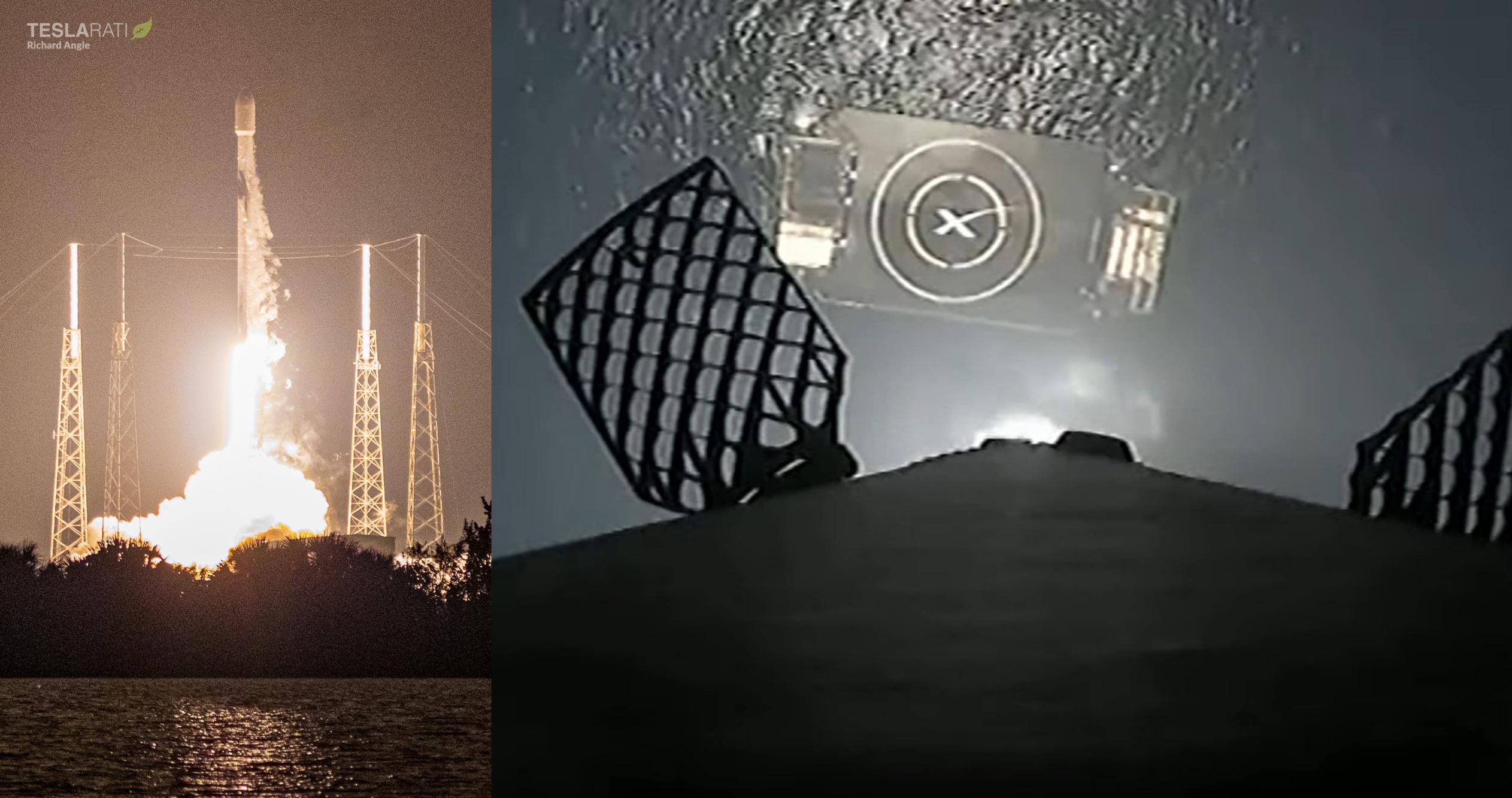

News
SpaceX Falcon 9 rocket sets reusability record, launches heaviest payload yet
SpaceX Falcon 9 booster B1051 has become the company’s ‘fleet leader’ after acing its 12th orbital-class launch and landing – a new record for the rocket family.
After a roughly 90-minute weather delay, Falcon 9 lifted off without issue around 12:48 am EST on March 19th. Booster B1051 touched down on drone ship Just Read The Instructions (JRTI) about nine minutes later, followed by the successful deployment of 53 Starlink V1.5 satellites just over an hour after launch. Starlink 4-12 was SpaceX’s 11th successful launch in the first 11 weeks of 2022. SpaceX CEO Elon Musk says that Starlink 4-12 was also the heaviest payload ever launched by Falcon 9, weighing in at 16.25 metric tons or ~35,800 pounds.
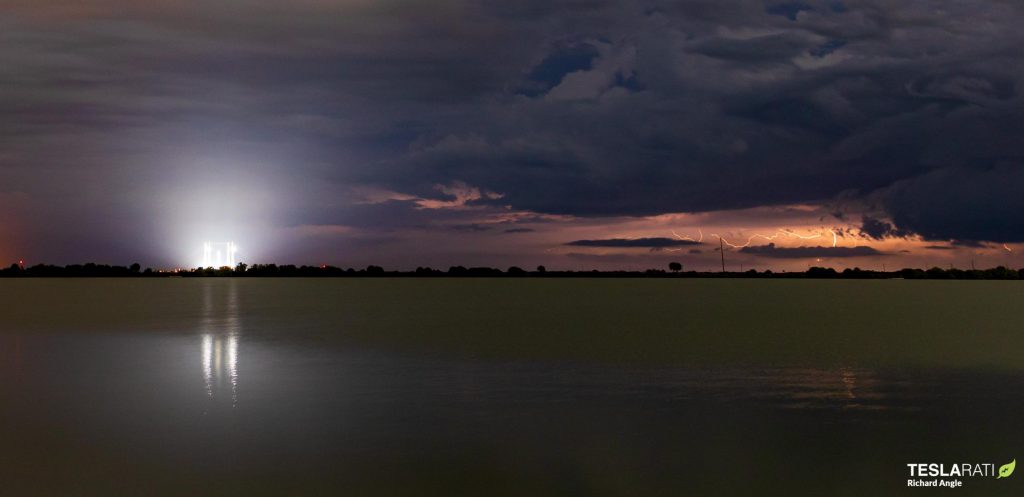
It’s not entirely clear how SpaceX was able to expand Falcon 9’s performance envelope or how far the envelope was pushed. In May 2019, Musk actually claimed that the Starlink V0.9 payload would weigh “18.5 tons” and be SpaceX’s heaviest payload ever, whereas three years later he says Starlink 4-12 set a new record of 16.25 metric tons. Assuming Musk was referring to short tons in 2019 and that SpaceX’s Starlink payload adapter and the tensioning rods that hold the stack together are roughly the same weight (~3 mT) three years later, the true total mass of Starlink 4-12’s payload could be as high as 19-19.5 metric tons (~42,000 lb). Its 53 Starlink V1.5 satellites, meanwhile, would weigh about 307 kilograms (~675 lb) each.
In other words, Starlink 4-12’s record-breaking payload could be up to 2.5 metric tons – about 15% – heavier than the Starlink V0.9 payload that set SpaceX’s internal record in 2019.
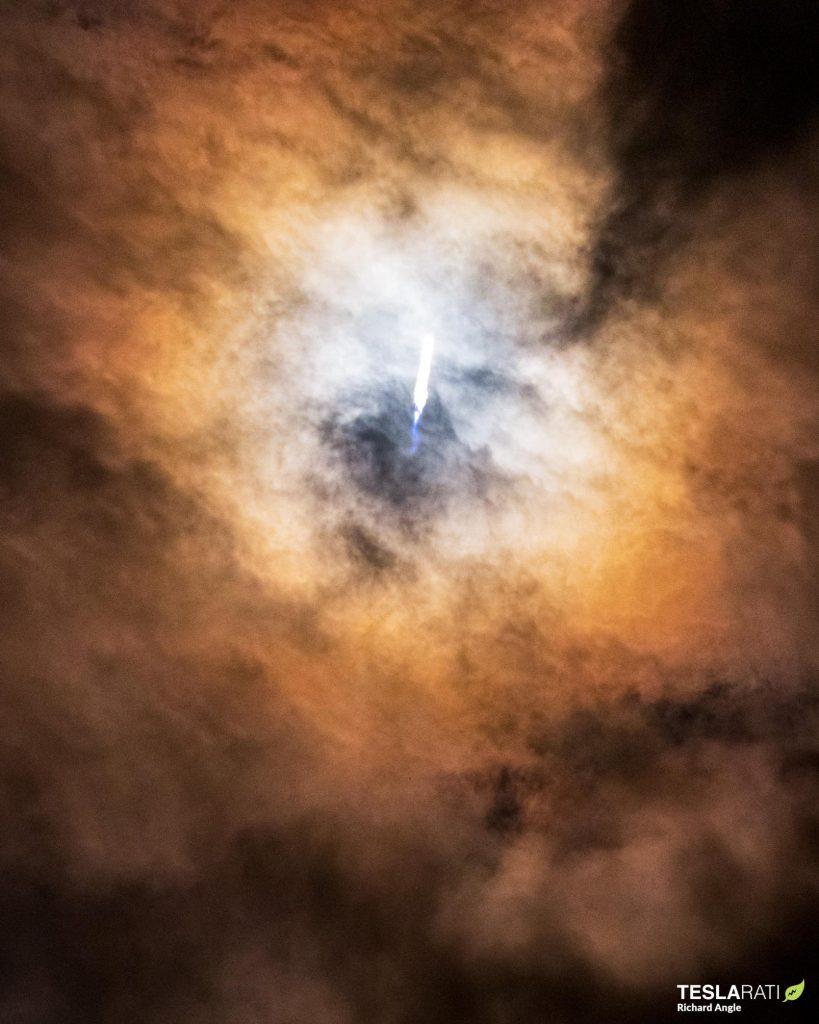
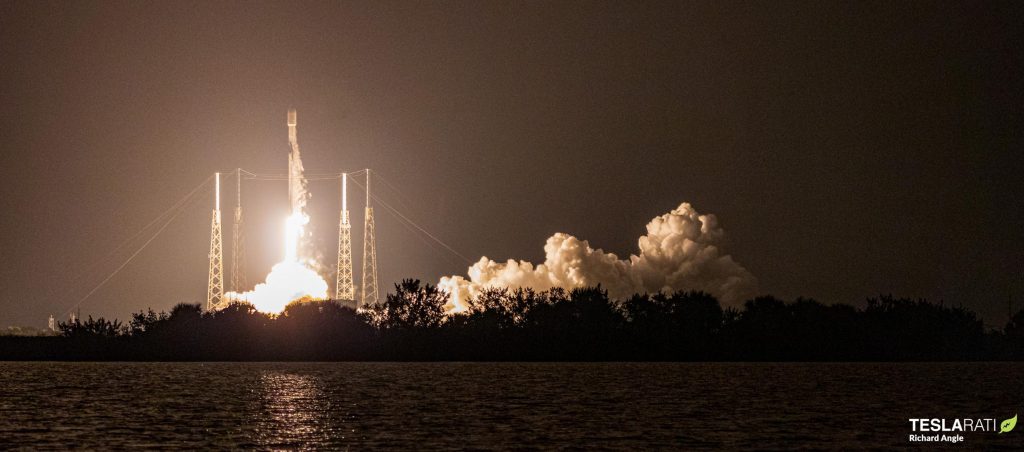
SpaceX says a Falcon 9 rocket is on track to launch Starlink 4-12 – a new batch of 53 satellites – no earlier than (NET) 11:24 pm EST on Friday, March 18th (03:24 UTC 19 March).
While ‘just’ the latest in an increasingly routine line of Starlink launches, SpaceX has confirmed that the mission will also set a new record for Falcon 9 reusability. Setting minor records is practically just as common for the average SpaceX launch but this particular record is more significant: if all goes according to plan, booster B1051 will become the first Falcon 9 first stage to complete 12 orbital-class launches and landings, pushing the envelope that much further.
The second oldest Falcon 9 booster that’s still operational, B1051 debuted in a significant way on March 2nd, 2019 by supporting Demo-1, Crew Dragon’s first uncrewed test flight. The launch was a perfect success and simultaneously kicked off the prolific careers of Crew Dragon and Falcon 9 B1051, both of which continue to have an excellent track record. Since Demo-1, B1051 has also supported the launches of Canada’s RADARSAT constellation, SiriusXM’s SXM-7 radio satellite, and 469 Starlink spacecraft spread over eight separate missions.
Starlink 4-12 will be its 12th launch and is set to occur just over two weeks after the third anniversary of its launch debut, translating to an average of one launch every three months or ~93 days. As an older booster and a fleet leader for several reusability milestones, B1051’s average turnaround time between launches – ~100 days – isn’t exceptionally impressive, though the booster has still accomplished a great deal.
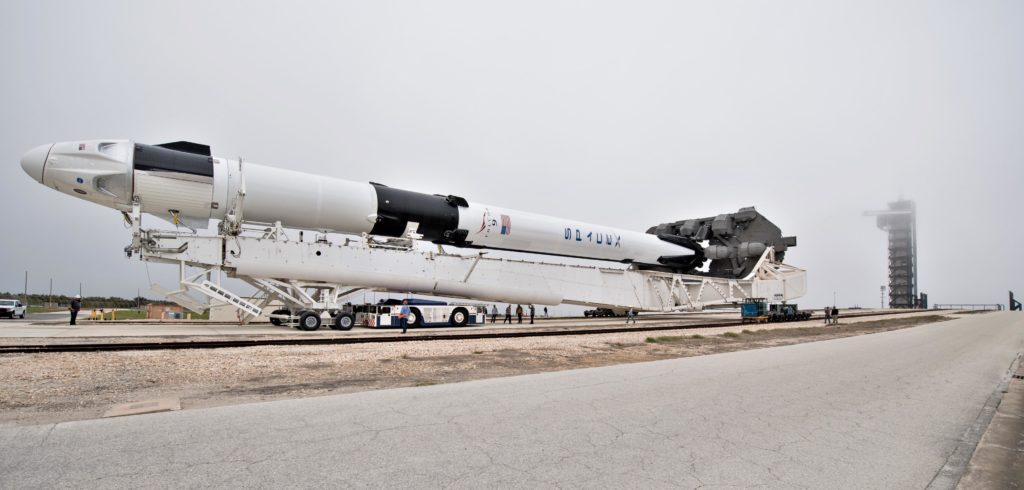

However, newer boosters like B1058 and B1060 – both of which have much faster average turnaround times – are tied with B1051 at eleven flights each. One of the two is almost guaranteed to supersede B1051 in the very near future and become SpaceX’s new fleet leader, meaning that either B1058 or B1060 is likely to be the first to set new reusability records after B1051’s 12th flight.
Falcon 9 B1060, for example, has flown 11 times in 611 days, averaging one launch every 55 days and 61 days per reuse. B1060’s last two turnarounds have been under 50 days. B1058 is very similar. In other words, both B1058 and B1060 could feasibly overtake B1051 as early as May or June 2022 and could both potentially complete their 15th, 16th, or even 17th launches before the end of the year.
As such, this could be Falcon 9 B1051’s last opportunity to lead SpaceX’s fleet of Falcon boosters. Tune into SpaceX’s official webcast to watch Starlink 4-11 live around 11:10 pm EST (03:10 UTC).
Elon Musk
Tesla investors will be shocked by Jim Cramer’s latest assessment
Jim Cramer is now speaking positively about Tesla, especially in terms of its Robotaxi performance and its perception as a company.

Tesla investors will be shocked by analyst Jim Cramer’s latest assessment of the company.
When it comes to Tesla analysts, many of them are consistent. The bulls usually stay the bulls, and the bears usually stay the bears. The notable analysts on each side are Dan Ives and Adam Jonas for the bulls, and Gordon Johnson for the bears.
Jim Cramer is one analyst who does not necessarily fit this mold. Cramer, who hosts CNBC’s Mad Money, has switched his opinion on Tesla stock (NASDAQ: TSLA) many times.
He has been bullish, like he was when he said the stock was a “sleeping giant” two years ago, and he has been bearish, like he was when he said there was “nothing magnificent” about the company just a few months ago.
Now, he is back to being a bull.
Cramer’s comments were related to two key points: how NVIDIA CEO Jensen Huang describes Tesla after working closely with the Company through their transactions, and how it is not a car company, as well as the recent launch of the Robotaxi fleet.
Jensen Huang’s Tesla Narrative
Cramer says that the narrative on quarterly and annual deliveries is overblown, and those who continue to worry about Tesla’s performance on that metric are misled.
“It’s not a car company,” he said.
He went on to say that people like Huang speak highly of Tesla, and that should be enough to deter any true skepticism:
“I believe what Musk says cause Musk is working with Jensen and Jensen’s telling me what’s happening on the other side is pretty amazing.”
Tesla self-driving development gets huge compliment from NVIDIA CEO
Robotaxi Launch
Many media outlets are being extremely negative regarding the early rollout of Tesla’s Robotaxi platform in Austin, Texas.
There have been a handful of small issues, but nothing significant. Cramer says that humans make mistakes in vehicles too, yet, when Tesla’s test phase of the Robotaxi does it, it’s front page news and needs to be magnified.
He said:
“Look, I mean, drivers make mistakes all the time. Why should we hold Tesla to a standard where there can be no mistakes?”
It’s refreshing to hear Cramer speak logically about the Robotaxi fleet, as Tesla has taken every measure to ensure there are no mishaps. There are safety monitors in the passenger seat, and the area of travel is limited, confined to a small number of people.
Tesla is still improving and hopes to remove teleoperators and safety monitors slowly, as CEO Elon Musk said more freedom could be granted within one or two months.
News
Tesla launches ultra-fast V4 Superchargers in China for the first time
Tesla has V4 Superchargers rolling out in China for the first time.

Tesla already has nearly 12,000 Supercharger piles across mainland China. However, the company just initiated the rollout of the ultra-fast V4 Superchargers in China for the first time, bringing its quick-charging piles to the country for the first time since their launch last year.
The first batch of V4 Superchargers is now officially up and running in China, the company announced in a post on Chinese social media outlet Weibo today.
The company said in the post:
“The first batch of Tesla V4 Superchargers are online. Covering more service areas, high-speed charging is more convenient, and six-layer powerful protection such as rain and waterproof makes charging very safe. Simultaneously open to non-Tesla vehicles, and other brands of vehicles can also be charged. There are more than 70,000 Tesla Superchargers worldwide. The charging network layout covers 100% of the provincial capitals and municipalities in mainland China. More V4 Superchargers will be put into use across the country. Optimize the charging experience and improve energy replenishment efficiency. Tesla will accompany you to the mountains, rivers, lakes, and seas with pure electricity!”
The first V4 Superchargers Tesla installed in China are available in four cities across the country: Shanghai, Zhejiang, Gansu, and Chongqing.

Credit: Tesla China
Tesla has over 70,000 Superchargers worldwide. It is the most expansive and robust EV charging network in the world. It’s the main reason why so many companies have chosen to adopt Tesla’s charging connector in North America and Europe.
In China, some EVs can use Tesla Superchargers as well.
The V4 Supercharger is capable of charging vehicles at speeds of up to 325kW for vehicles in North America. This equates to over 1,000 miles per hour of charging.
Elon Musk
Elon Musk hints at when Tesla could reduce Safety Monitors from Robotaxi
Tesla could be reducing Safety Monitors from Robotaxi within ‘a month or two,’ CEO Elon Musk says.

Elon Musk hinted at when Tesla could begin reducing Safety Monitors from its Robotaxis. Safety Monitors are Tesla employees who sit in the front passenger seat during the driverless rides, and are there to ensure safety for occupants during the earliest rides.
Tesla launched its Robotaxi fleet in Austin last Sunday, and after eight days, videos and reviews from those who have ridden in the driverless vehicles have shown that the suite is safe, accurate, and well coordinated. However, there have been a few hiccups, but nothing that has put anyone’s safety in danger.
A vast majority — close to all of the rides — at least according to those who have ridden in the Robotaxi, have been performed without any real need for human intervention. We reported on what was the first intervention last week, as a Safety Monitor had to step in and stop the vehicle in a strange interaction with a UPS truck.
Watch the first true Tesla Robotaxi intervention by safety monitor
The Tesla and UPS delivery truck were going for the same street parking space, and the Tesla began to turn into it. The UPS driver parallel parked into the spot, which was much smaller than his truck. It seemed to be more of an instance of human error instead of the Robotaxi making the wrong move. This is something that the driverless cars will have to deal with because humans are aggressive and sometimes make moves they should not.
The Safety Monitors have not been too active in the vehicles. After all, we’ve only seen that single instance of an intervention. There was also an issue with the sun, when the Tesla braked abnormally due to the glare, but this was an instance where the car handled the scenario and proceeded normally.
With the Robotaxi fleet operating impressively, some are wondering when Tesla will begin scaling back both the Safety Monitors and Teleoperators that it is using to ensure safety with these early rides.
CEO Elon Musk answered the inquiry by stating, “As soon as we feel it is safe to do so. Probably within a month or two.”
As soon as we feel it is safe to do so.
Probably within a month or two. We continue to improve the Tesla AI with each mile driven.
— Elon Musk (@elonmusk) June 30, 2025
Musk’s response seems to confirm that there will be fewer Teleoperators and Safety Monitors in the coming months, but there will still be some within the fleet to ensure safety. Eventually, that number will get to zero.
Reaching a point where Tesla’s Robotaxi is driverless will be another significant milestone for the company and its path to fully autonomous ride-sharing.
Eventually, Tesla will roll out these capabilities to consumer-owned vehicles, offering them a path to generate revenue as their car operates autonomously and completes rides.
For now, Tesla is focusing on perfecting the area of Austin where it is currently offering driverless rides for just $4.20 to a small group of people.
-

 News5 days ago
News5 days agoTesla Robotaxi’s biggest challenge seems to be this one thing
-

 News2 weeks ago
News2 weeks agoTesla confirms massive hardware change for autonomy improvement
-

 Elon Musk2 weeks ago
Elon Musk2 weeks agoElon Musk slams Bloomberg’s shocking xAI cash burn claims
-

 News2 weeks ago
News2 weeks agoTesla features used to flunk 16-year-old’s driver license test
-

 News2 weeks ago
News2 weeks agoTesla China roars back with highest vehicle registrations this Q2 so far
-

 News2 weeks ago
News2 weeks agoTexas lawmakers urge Tesla to delay Austin robotaxi launch to September
-

 News2 weeks ago
News2 weeks agoTesla dominates Cars.com’s Made in America Index with clean sweep
-

 News2 weeks ago
News2 weeks agoTesla’s Grok integration will be more realistic with this cool feature





















